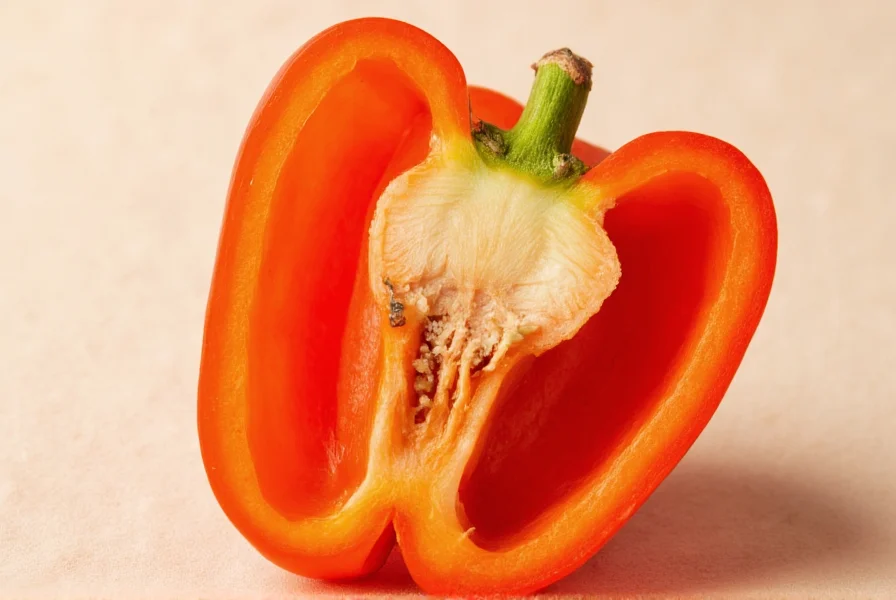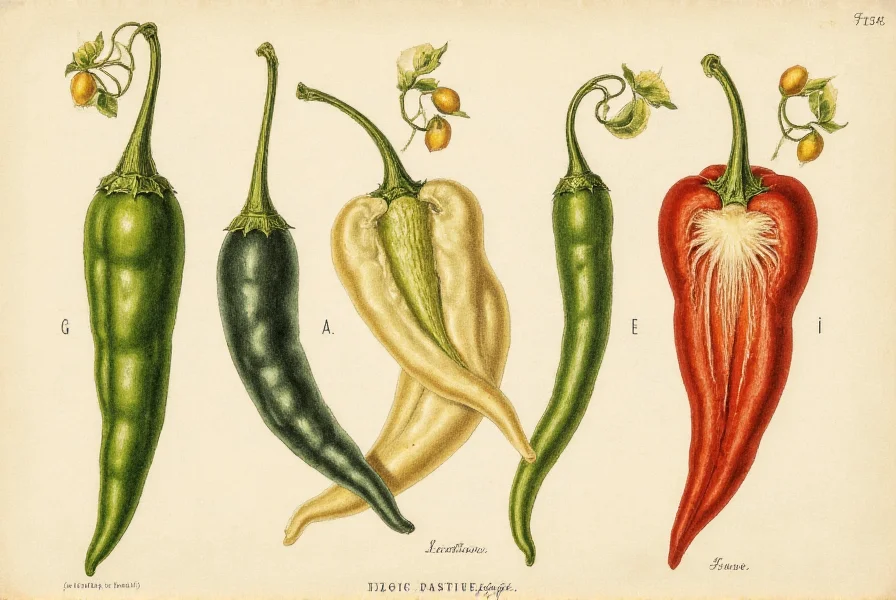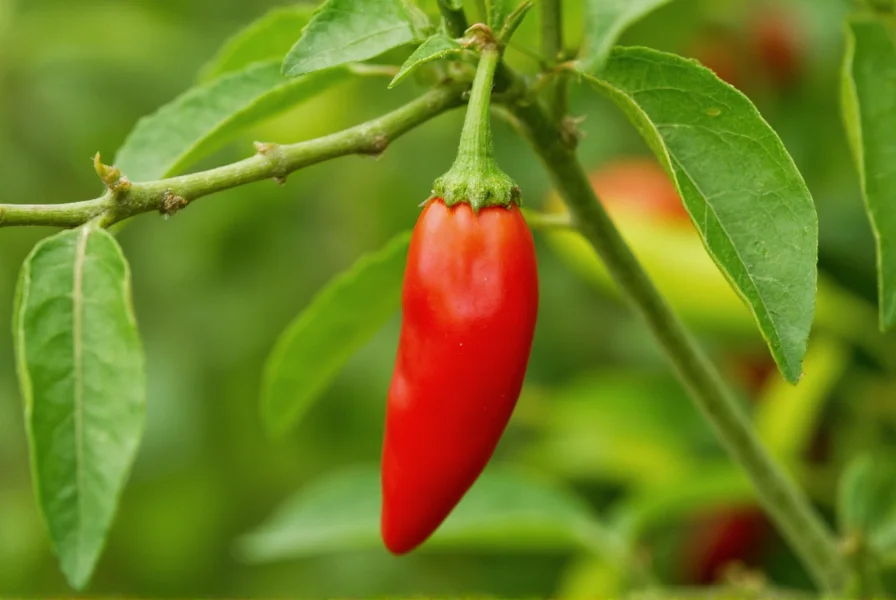Understanding whether a pepper qualifies as a fruit requires examining both botanical science and culinary tradition. While your kitchen might treat peppers as vegetables, the scientific community has a different perspective based on plant biology.
Botanical Definition of a Fruit
In botanical terms, a fruit develops from the ovary of a flowering plant and contains seeds. This scientific definition differs significantly from culinary classifications, which often categorize foods based on flavor profile and usage in cooking. Peppers perfectly fit the botanical criteria—they form from the flower of the pepper plant and house numerous seeds within their fleshy interior.

Peppers: The Scientific Classification
All varieties of peppers—whether sweet bell peppers, spicy jalapeños, or fiery habaneros—are classified as fruits in botanical science. Specifically, they're categorized as berries, which might surprise many people. In botanical terminology, a berry is a fleshy fruit produced from a single ovary, and peppers fit this description precisely.
The confusion arises because in culinary contexts, peppers are treated as vegetables due to their savory flavor profile and common usage in savory dishes. This culinary classification has nothing to do with scientific accuracy and everything to do with how we prepare and consume these foods.
Culinary vs. Botanical Classification
The distinction between culinary and botanical classifications explains why so many foods create confusion. What chefs and home cooks call "vegetables" often don't align with scientific definitions. This difference serves practical purposes in the kitchen while maintaining scientific accuracy in plant biology.
| Food Item | Botanical Classification | Culinary Classification |
|---|---|---|
| Peppers | Fruit (berry) | Vegetable |
| Tomatoes | Fruit (berry) | Vegetable |
| Cucumbers | Fruit (pepo) | Vegetable |
| Eggplants | Fruit (berry) | Vegetable |
| Zucchinis | Fruit (pepo) | Vegetable |
Historical Context of Pepper Classification
The botanical classification of peppers as fruits dates back to Carl Linnaeus, the 18th-century botanist who established the modern system of plant classification. In 1753, Linnaeus classified peppers in the genus Capsicum, recognizing their fruit-bearing nature. Despite this scientific understanding, culinary traditions continued to treat peppers as vegetables, creating the dual classification system we have today.

Why Pepper Classification Matters
Understanding that peppers are fruits has practical implications beyond academic interest. For gardeners, recognizing peppers as fruits affects how they approach pollination and seed saving. For nutritionists, the fruit classification highlights peppers' vitamin C content—often higher than many sweet fruits. And for food scientists, this classification helps explain peppers' ripening process and optimal harvesting times.
When peppers transition from green to red, yellow, or orange, they're actually ripening like other fruits. This ripening process increases sugar content and changes flavor profiles, similar to how tomatoes or bananas ripen. The green stage represents an unripe fruit, which explains why green peppers often have a more bitter flavor compared to their fully ripened counterparts.
Common Misconceptions About Pepper Classification
Many people believe that because peppers lack sweetness, they can't be fruits. This misconception stems from equating "fruit" with "sweet." In reality, the botanical definition makes no reference to sweetness. Lemons, limes, and even cucumbers are all technically fruits despite their non-sweet profiles.
Another common misunderstanding is that only plants producing multiple seeds can be fruits. While peppers do contain numerous seeds, the presence of seeds alone doesn't determine fruit status. Some fruits like bananas have been bred to be seedless while still maintaining their botanical classification as fruits.
Practical Implications in Cooking and Nutrition
Whether you classify peppers as fruits or vegetables affects more than just semantics. In cooking, understanding peppers' fruit nature explains why they pair well with both savory and sweet ingredients. Their natural sugars caramelize beautifully when roasted, and their acidity complements both meat dishes and fruit-based salsas.
Nutritionally, recognizing peppers as fruits highlights their impressive vitamin content. Red bell peppers contain nearly three times more vitamin C than oranges by weight. They're also rich in vitamin A, antioxidants, and other phytonutrients commonly associated with fruits rather than vegetables.
Frequently Asked Questions
Why are peppers considered fruits when they're not sweet?
Peppers are classified as fruits based on their botanical structure, not their taste. Botanically, a fruit develops from a flower and contains seeds. Sweetness isn't part of the scientific definition—many fruits like lemons and tomatoes aren't particularly sweet but are still fruits.
Are all types of peppers fruits, including spicy varieties?
Yes, all pepper varieties—bell peppers, jalapeños, habaneros, and even extremely spicy ghost peppers—are botanically classified as fruits. The presence of capsaicin (which creates heat) doesn't affect their botanical classification as seed-bearing structures that develop from flowers.
How does the fruit classification affect how I should store peppers?
Since peppers are fruits, they're best stored in the refrigerator's crisper drawer, similar to other fruits. Unlike vegetables that prefer room temperature, peppers as fruits maintain freshness longer when kept cool. However, unlike many sweet fruits, they shouldn't be stored with ethylene-producing fruits like apples or bananas, which can accelerate ripening.
Is there a difference between green peppers and colored peppers?
Green peppers are simply unripe versions of what will become red, yellow, or orange peppers. As peppers ripen (like all fruits), their sugar content increases, vitamin levels change, and flavors become sweeter and more complex. Fully ripened colored peppers typically contain more nutrients than their green counterparts.











 浙公网安备
33010002000092号
浙公网安备
33010002000092号 浙B2-20120091-4
浙B2-20120091-4